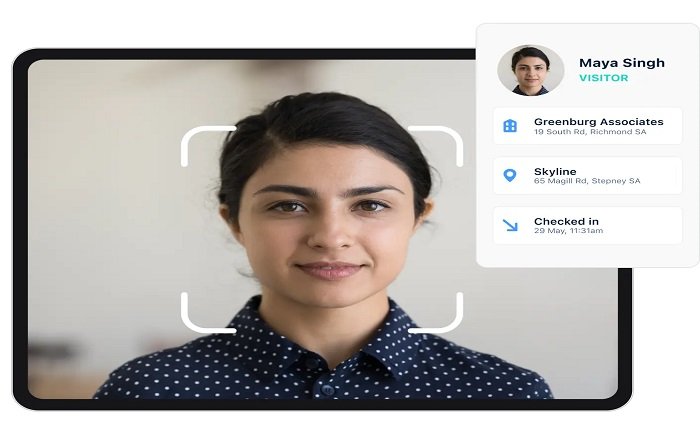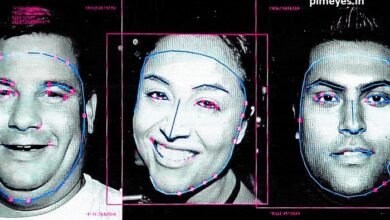Face Check .ID: The Ultimate Security Challenge!

In today’s digital world, protecting our personal information is more important than ever. One technology gaining attention is Face Check .ID, a biometric solution that uses facial recognition to verify identity. I first encountered it while working with a few companies looking for secure ways to verify user identities without passwords. I was amazed at how intuitive and secure it is. By simply scanning a face, Face Check .ID instantly confirms whether someone is who they say they are. It’s used in many places now—banks, healthcare systems, and even social media platforms.
In this post, I’ll walk you through how Face Check .ID works, its benefits, and why it’s becoming the go-to solution for secure authentication. We’ll also look at real-world examples to help you understand how you can benefit from this tech, especially if you’re running a business or just want to protect your personal accounts.
What is Face Check .ID?
Face Check .ID uses your face as a security key. It’s a biometric system that identifies you by the unique features of your face. I remember the first time I used it—it was for logging into an online banking app. The ease of just looking at my phone and being instantly authenticated was amazing. No more fumbling with passwords or PINs. Your face does the job in seconds. It’s more secure than you might think.
Unlike passwords, which can be hacked or forgotten, your face is unique to you. Face Check .ID is a reliable way to verify your identity, especially with the growing online security threats. Many top banks and tech companies are already using it for secure logins and fraud detection.
How Face Check .ID Works
Here’s how it works: you simply present your face to a camera—like taking a selfie. The camera captures key points on your face, like the distance between your eyes and the shape of your nose. When I set it up for a friend, it took just a few seconds for the system to scan her face and create a biometric template.
This template, which is a map of your face, is stored in a database. When you return to log in or authenticate, the system compares your face to the stored template. If they match, you’re in. It’s backed by sophisticated algorithms, and some systems even use AI to improve accuracy, even in poor lighting or weird angles. Anti-spoofing features help protect against photos or videos trying to trick the system.
Benefits of Face Check .ID
There are many benefits to Face Check .ID. First, it’s a huge time-saver. I used it to log into a payment system, and instead of typing a password, I was authenticated in under a second. It’s a real game-changer when you’re in a rush.
Security is another big plus. I’ve worked with organizations dealing with sensitive data, and security is always a concern. Face Check .ID offers better security than passwords or even fingerprints. Since your face is unique, it’s almost impossible for someone to duplicate or steal it. Plus, no more worrying about weak passwords being hacked. The system is non-intrusive—you don’t need to touch anything.
Lastly, Face Check .ID makes authentication more convenient. I often forget my passwords, but with Face Check .ID, I can log in with just a glance. It’s a stress-free experience.
Applications of Face Check .ID
Face Check .ID is being used in many industries. In banking, it’s becoming common for people to use facial recognition to log into their accounts or approve transactions. I used it once when making a payment transfer, and it felt much safer than typing a password.
Healthcare is also using it. Hospitals use facial recognition to match patients to their records, which helps prevent mistakes. I’ve talked to healthcare IT teams, and they love this technology, especially in emergencies when speed is crucial.
Social media platforms are using Face Check .ID, too. Ever been automatically tagged in a photo? That’s Face Check .ID at work. It’s amazing how much easier it makes identifying people without manually tagging them.
Security Features of Face Check .ID
Face Check .ID has some serious security features. First, it has anti-spoofing technology. I tested it by having a friend hold up a photo of my face, and the system instantly flagged it as a fake.
There’s also liveness detection, which ensures that the person being scanned is alive, not a photo or video. I’ve used this in banking apps where the system asks you to blink or move your head to confirm you’re a real person.
Plus, Face Check .ID encrypts all your data. Even if the system gets hacked, your facial data remains safe and useless to anyone who tries to steal it.
The Technology Behind Face Check .ID
Face Check .ID is powered by cutting-edge technology, especially deep learning algorithms. These algorithms process facial features and learn to recognize patterns that make each face unique. I’ve talked to AI experts, and they say convolutional neural networks (CNNs) are key to this process.
The technology has improved a lot over the years. I’ve used older biometric systems, and they weren’t nearly as accurate as Face Check .ID. The system continues to get smarter as it processes more scans, making it even more secure over time.
How to Set Up Face Check .ID
Setting up Face Check .ID is easy. I helped a small business set it up recently, and it was straightforward. Here’s how you do it:
- Choose the right device: You’ll need a camera—either a smartphone or a dedicated device.
- Download the software: Install the Face Check .ID app or software. It’s user-friendly.
- Scan your face: The system will prompt you to scan your face. It captures the right angles and lighting.
- Register your information: After scanning, the system will store your facial data and link it to your account.
- Test the system: Finally, test the system to make sure it works.
Face Check .ID vs Other Biometric Solutions
When compared to other biometric systems like fingerprints or iris scanning, Face Check .ID has the advantage in convenience. Fingerprint sensors can be finicky—sometimes they don’t work if your finger is dirty or the scanner is sensitive.
With Face Check .ID, you don’t need to touch anything, and it works even if you wear glasses or change your hairstyle. Plus, it’s more hygienic than fingerprint or iris scanning.
Future of Face Check .ID
The future of Face Check .ID is bright. As more industries use biometric systems, facial recognition will become even more common. Industry leaders predict that, in the next few years, Face Check .ID will be used in everything from smartphone security to government systems.
As AI and machine learning continue to improve, facial recognition will become faster, more accurate, and even more secure. Imagine a world where you don’t have to remember passwords anymore—everything will be verified through your face.
Conclusion
Face Check .ID is revolutionizing identity verification by providing a seamless, secure, and user-friendly solution for both individuals and businesses. With its cutting-edge technology, it offers a level of convenience and security that traditional methods simply can’t match. Whether it’s for banking, healthcare, or social media, Face Check .ID is becoming an essential tool for safeguarding digital identities. As technology continues to improve, we can expect Face Check .ID to evolve and expand into even more areas of our lives, making authentication faster, safer, and more efficient.
FAQs
What is Face Check .ID?
Face Check .ID is a biometric authentication system that uses facial recognition to verify an individual’s identity securely.
Is Face Check .ID secure?
Yes, Face Check .ID offers high-level security features, including anti-spoofing and liveness detection, ensuring accurate and safe authentication.
Can Face Check .ID be used for businesses?
Yes, businesses can integrate Face Check .ID for secure employee logins, customer authentication, and enhanced security measures.
How accurate is Face Check .ID?
Face Check .ID boasts a high accuracy rate, with its AI algorithms continuously improving to provide reliable facial recognition in various conditions.




